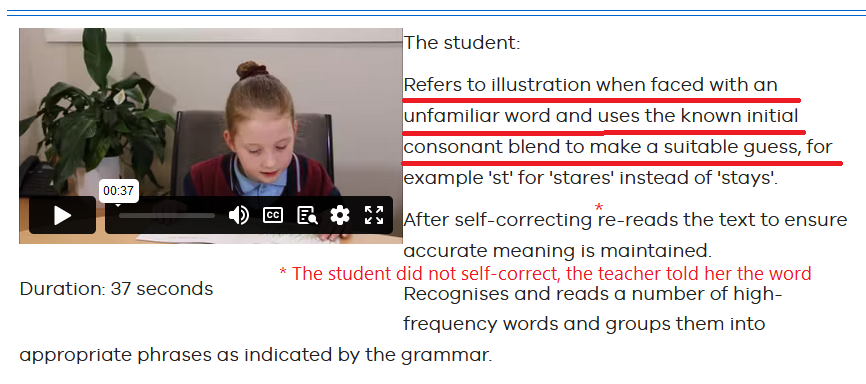Why doesn’t NAPLAN start in Year 1?
0 Replies
It’s too late to find out a child is struggling to read and write in Year 3. The horse has bolted. It’s no longer possible to provide effective, cost-effective early intervention. Intervention is harder, less effective and more expensive. The damage done to a child’s confidence and motivation can be even harder to undo.
Why don’t we collect national data on reading and spelling skills earlier, in order to better understand learning in the vital early years? There’s been a lot in the media lately about the latest NAPLAN results, which show that a third of Australian kids are still struggling to read and write well. Indigenous, rural and low socioeconomic kids are struggling more than most. This is a serious social justice issue.
Reading and spelling problems start long before NAPLAN shines a light on them. Don’t the NAPLAN people know exactly what all children are expected to know and be able to do in Year 1, in order to measure it?
Well, maybe not. Our National Curriculum contains learning area and content descriptions, but not specific, measurable, achievable, realistic, timed (SMART) goals for phonemic awareness, word-level reading and spelling. The content descriptions for phonic and word knowledge for the first year of schooling are in the red text in the table below. I’m glad I don’t have to work out how to assess them! I’ve added the italics, and in the second column have put some of the kinds of goals for this skill area I’d want if I were teaching Foundation (which I’m not, so I’m sure they can be improved upon).
| National curriculum Foundation phonic and word knowledge content descriptions | Possible SMART Foundation phonic and word knowledge goals |
| Recognise and generate rhyming words, alliteration patterns, syllables and sounds (phonemes) in spoken words. (AC9EFLY09) Rhyme and alliteration are important in poetry, but in early literacy teaching, phonemes are what matter. Segment sentences into individual words; orally blend and segment single-syllable spoken words; isolate, blend and manipulate phonemes in single-syllable words (phonemic awareness). (AC9EFLY10) English one-syllable words can be up to seven phonemes long (e.g. ‘sprints’, ‘strengths’, ‘glimpsed’). Blending and segmenting even two or three sound words is very hard for many young children, and manipulation is even harder. How many sounds/what word structures (VC, CVC etc) are meant here? Recognise and name all upper and lower case letters (graphs) and know the most common sound that each letter represents. (AC9EFLY11) Vowel letter names are relevant sounds represented by these letters, so are useful when sounding out words. But when kids apply the same logic to consonant letters, they tend to write ‘car’ as ‘cr’, ‘left’ as ‘lft’, and ‘enemy’ as ‘nme’. Some research suggests letter name knowledge can interfere with children’s ability to apply the alphabetic principle. Kids must recognise letters, but is letter name knowledge essential in Foundation, especially for at-risk kids who are easily confused by too much information? ‘The most common sound each letter represents’ isn’t always what you might think. Fry’s 1966 large phoneme-grapheme count found 1801 instances of the letter Y as in ‘very’ (/ee/ sound), 211 of Y as in ‘my’ (/ie/ sound), 100 of Y as in ‘system’ (/i/ sound) and only 53 instances of Y as in ‘yard’. The letter O represented /oe/ as in ‘open’ 1876 times, /u/ as in ‘other’ 1723 times, and /o/ as in ‘not’ 1558 times in this count. Our National Curriculum needs to be more precise about sound-spelling relationships. Write consonant-vowel-consonant (CVC) words by representing sounds with the appropriate letters, and blend sounds associated with letters when reading CVC words. AC9EFLY12 If taught well, most Foundation kids can also learn to read and spell at least VC, CVCC and CCVC words like ‘in’, ‘at’, ‘help’ and ‘from’. Many can even spell /sh/, /ch/, /th/ and /ng/, though the National Curriculum doesn’t count these as consonants, which it defines as: “All letters of the alphabet that are not vowels. The 21 consonants are b, c, d, f, g, h, j, k, l, m, n, p, q, r, s, t, v, w, x, y, z”. Yet ‘vowel’ and ‘consonant’ are terms from linguistics for speech sounds, of which there are 44 in General Australian English. Use knowledge of letters and sounds to spell words. (AC9EFLY13) I guess it doesn’t hurt to state this while there are still kids out there being asked to memorise high-frequency word lists. But which letters, sounds and types of words? Read and write some high-frequency words, and other familiar words (AC9EFLY14) Which high-frequency words? How many? Three? Fifty? How many other familiar words? Understand that words are units of meaning and can be made of more than one meaningful part (AC9EFLY15) Which prefixes and suffixes should be taught in Foundation? Will teachers using lists like the Oxford Wordlist start teaching how words are built? The Oxford Wordlist includes ‘lot’ and ‘lots’, ‘cousin’ and ‘cousins’, ‘live’ and ‘lived’, ‘play’, ‘played’, ‘playing’ and ‘playground’, and ‘friend’, ‘friends’ and ‘friend’s’, as though they’re unrelated words. | Blend, segment, read and spell at least 90% of vowel-consonant (VC), CVC, CVCC and CCVC words containing the following sound-spelling relationships: Vowel sounds as in ‘at’, ‘red’, ‘him’, ‘on’, ‘up’, ‘put’. Consonant sounds as in ‘bib‘, ‘cat’, ‘did‘, ‘frog’, ‘got’, ‘him’, ‘jump’, ‘kit’, ‘leg’, ‘mum‘, ‘nest’, ‘pop‘, ‘run’, ‘sift’, ‘is‘, ‘ten’, ‘vet’, ‘win’, ‘yet’, ‘zip’, ‘shop’, ‘chin’, ‘thin’, ‘them’, ‘swing‘. Blend, segment, read and spell at least 60% of words with: CCVCC, CCCVC and CVCCC structures and the above sound-spelling relationships. Position-related consonant spellings as in ‘quit’, ‘box‘, ‘off’, ‘well‘, ‘mess‘, ‘buzz‘, ‘luck‘, catch, dodge, ‘when’, ‘bank’, ‘solve‘. Inflectional suffixes: regular plural (s, es), past tense (ed), third person (s, es), present progressive (ing), possessive (‘s, ‘), comparative (er), superlative (est), past participle (en). Derivational suffixes: agent noun (er), adjective (y), adverb (ly). Final syllable -le as in bottle. Contractions as in ‘isn’t‘, ‘can’t‘, ‘don’t, ‘it‘s‘. Read at least 60% of these not-yet-fully-decodable words in connected text: the, we, she, he, me, be, a, of, are, you, your, for, or, more, before, her, sister, over, under, after, were, to, do, who, two, room, zoo, too, soon, what, was, want, where, there, here, came, name, made, make, ate, I, like, time, side, so, go, no, home, hope, one, once, love, some, come, say, day, play, they, boy, toy, now, down, new, few, out, our, house, about, found, first, girl, car, park, look, good, book, could, should, would, saw, all, call, ball, my, by, try, very, only, family, happy, see, been, three, sleep, eat, real, said, because, school, friend. |
If you’re in Melbourne and your Year 1 or 2 child can’t do the things in the right-hand column above, you might like to bring them to one our school holiday groups.
It’s up to each state to interpret the National Curriculum, so they can add more clarity and specificity, I guess. Two states – NSW and SA – now test all Year 1 students’ phonics skills, and there is a free, online Australian Year 1 Phonics Check available for anyone to use, along with a phonics progression.
My own state, Victoria, has devised its own, watered-down version of the Year 1 Phonics Check (10 questions not 40). I agree with critics’ description of this: hopeless, and encourage Victorians to tell the current Parliamentary Inquiry into the state education system this, and whatever else you think needs saying, before 13th October. We’re supposed to be the Education State, but our Education department is still recommending the use of Running Records, and the Victorian Curriculum and Assessment Authority website still promotes guessing words from pictures and first letters. The picture and black text annotation below is a screenshot from the VCAA website (the cranky red additions are mine).

Year 1 children’s word-level reading and spelling skills will probably only be assessed consistently across the country if this becomes part of NAPLAN. In the meantime, the growing number of teachers around the country who understand learning science (often thanks to grassroots groups like RSS, TFE or SBP) will keep setting high, SMART reading and spelling goals for young learners, teaching directly, explicitly and systematically, and checking their progress with more valid and reliable assessments than Running Records. I just wish they had more system-wide clarity and help.
Photo at top: https://www.pxfuel.com/en/free-photo-oyqyx



Leave a Reply